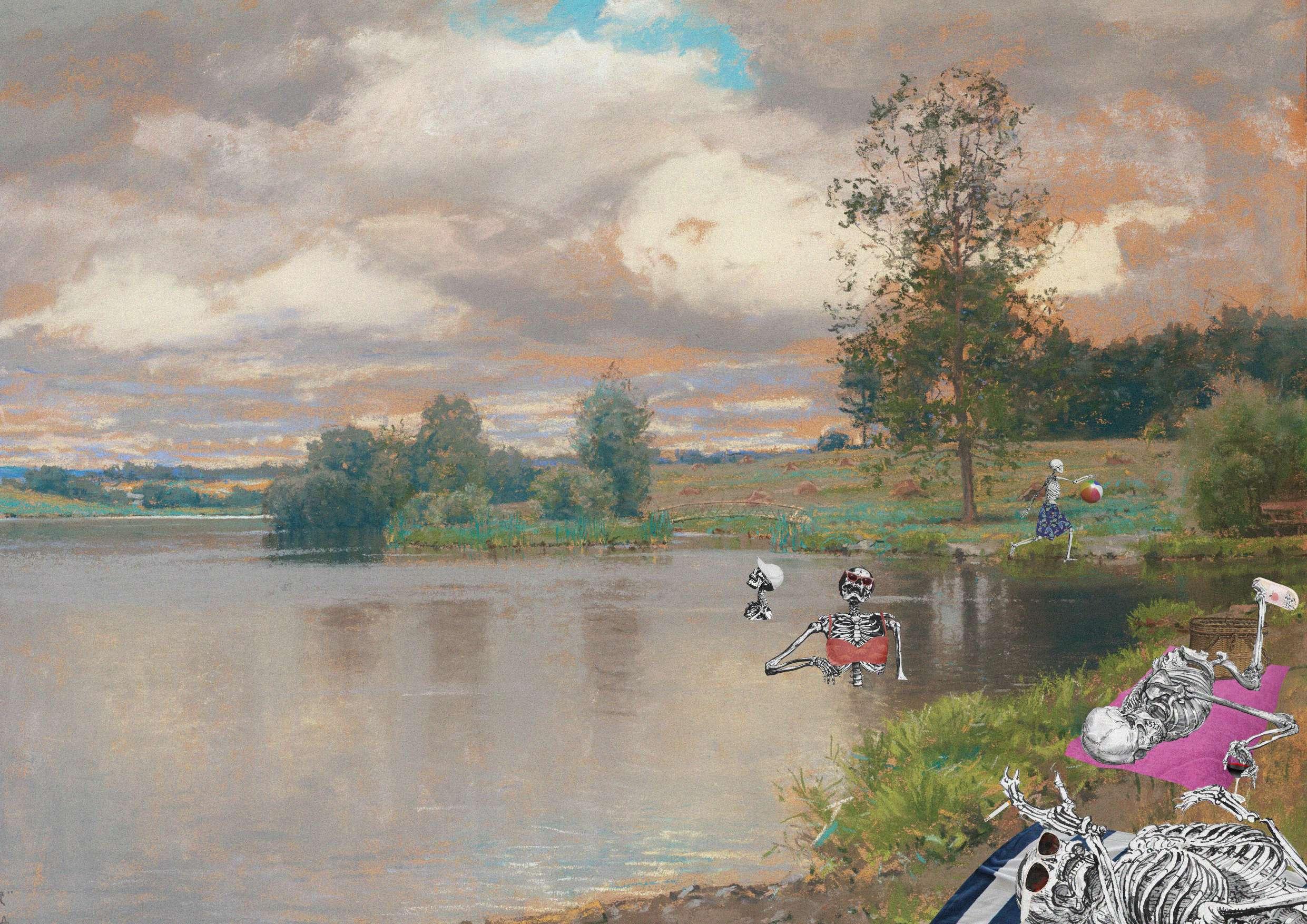
5 minute read
Water Dust at Lake Monroe
From a forever untold memoir of a Monroe lifeguard
by Zoltan Tajti
I’m sitting by lake Monroe, on its Northern shore. It’s not called Monroe, though, and I’m not sitting either, but that’s beside the point. The lake is, as it were, somewhere in Eastern Europe, somewhere within the Carpathian Basin, once home to the Pannon Sea, now home to its few leftover waters and abundant fossils. This one, the fake Monroe, is the biggest of the ancient sea’s scrap reminders.
The water is muddy – oh, wait… the water WAS muddy – that’s how it got its real name as stolen from some Slavic language, the same way as the whole land was stolen from Slavs, and half of the language spoken in the sea basin was stolen from the same Slavs. The mud, a mixture of dead fish, algae and soil, silky and slippery, was naturally regarded as remedial against all diseases, and was dissolved in the freshwater of the lake completely. The water constantly changed its colour, depending on how the microscopic rotting body parts of fish and snail reflected sun and moonlight – it was also thick and syrupy from the mud, viscous, as the local thieves of the Slavs called it, with yet another stolen word from yet another people. Viscosity meant the following: water particles lubed up by mud slid against each other, resulting in even the weakest of winds vaporising the surface of the lake. This created a dense layer of tiny water droplets that sat in the air, killing everyone caught off shore in the wind. One could stand waist deep in the water and slowly drown without noticing. *
That summer, a group of elementary school children visited one of the Northern Monroe towns for a field trip. Their activity leader, one Mr John Smith, a physed teacher freshly out of college was alone with the thirty and some kids. Storms form quickly above big bodies of water, which is what happened a few hours into the beach day, with half of the children playing in the shallows, under supervision of their teacher. The wind came from the North-East, from between two hill ridges a few miles off the shore, carrying a giant black cloud that casted a shadow over the lake within seconds of appearing over the hills. The storm alert went off, its sirens muffled by the gush of the wind tearing up the water. The vigilants were quick to run for shelter under the roofs of the beach chalets, but the children were too busy playing in the small cove, man made for their safety.
Mr Smith, standing among them in the water, rushed to pick them up one by one and ran with them ashore, one kid slung over his shoulder, another clenched under his arm. The storm was at its full force, with more than half of the children still in water and oblivious to peril, amused by the newly created waves bouncing them up and down and against each other. The water was shallow enough for John to move quickly; he managed to get all children out of the water and gather them on the shore before he collapsed, knee-deep in the lake, within a few metres of the safety of the grass lawn running along the beach.
Resuscitation attempts were in vain – lungs filled with water kill a man within minutes. John inhaled a deadly amount of water vapour (water dust, as the Carpathians call it) while running back and forth between the shore and the foaming waters of the cove. White foam is a tell tale sign waves are breaking apart to release the deadly, muddy dust into the air. Dark water turns pristine white reflecting any light stuck underneath the clouds, illuminating whatever stands in the way. The children watched silently at the body of John, laid on the lawn, his body gleaming, suspended against the white backdrop of water and the black, murderous clouds entrapping the wind above the shoreline.
Monroe storms are quick to form, and quick to go. We were still doing chest compressions awaiting assistance when the beach fell silent, the waves died down, and beach-goers emerged from their chalets. Carpathians suspected nothing had happened – they had not seen the white froth of the water, only present long enough to take what was its due, as the lake from time to time does, just like they took land and words from Slavs. A few loitered around John Smith’s body surrounded by the yet no more than startled children, their teacher’s lungs and nostrils filled with the muddy water dust of ancient sea creatures, now reflecting none of their hue, mud and light being tightly insulated within the corpse.
Water, however small it shrank during its history, prevails. And so does Summer, for the Carpathians. Beach time, save for a few quick storms, is perpetual at lake Monroe; death is no more than a borderline between recursive patterns, a stylus skipping back repeatedly to a groove on an overworn vinyl. The lake robs, as did the Carpathians.


